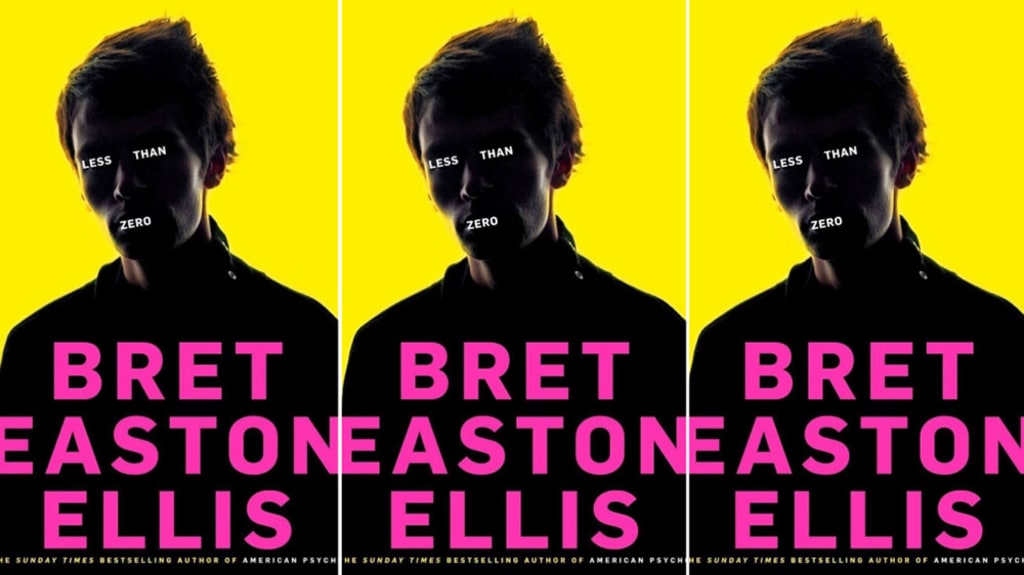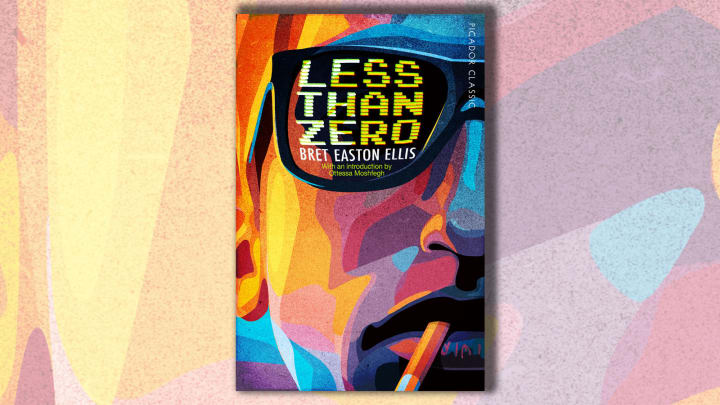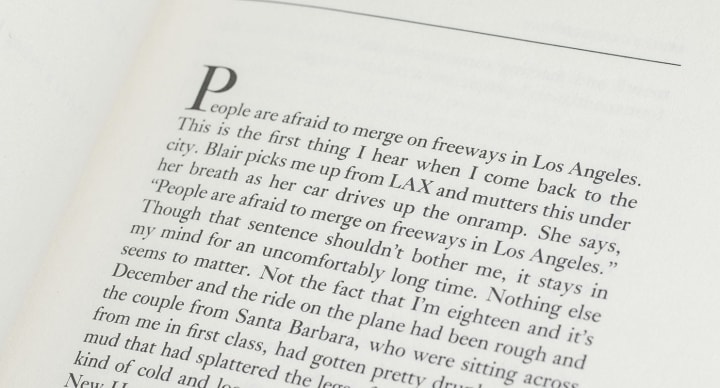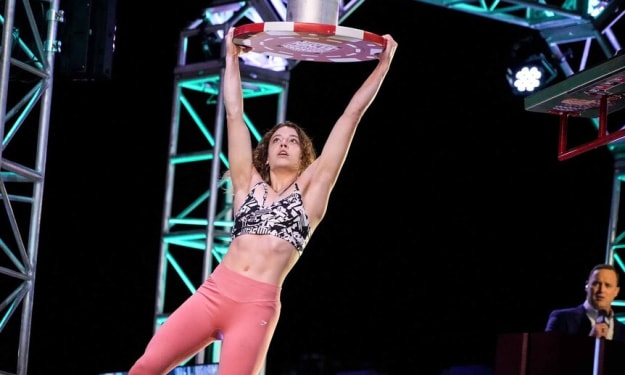"Less Than Zero" by Bret Easton Ellis
A Reading Experience (Pt.10)

I first read “Less Than Zero” by Bret Easton Ellis when I was sixteen years’ old and I was just about to finish school and go to sixth form. I discovered the book on a shelf at the library whilst I was looking at Nick Cave’s “The Death of Bunny Munro”. It was a bright yellow, like a light bulb with pink capital letters that said “Less than Zero” across it. A silhouette of every American teenaged boy ever and a look of almost complete despair about the book even though it was brightly coloured, made me want to read that one and put Nick Cave on hold until the next day. Little did I know that I would become obsessed with this book for just over a year and everything I did, even to the way I spoke, contained lines that came from this text.
My favourite character in the entire book was always Julian. Julian was like the tragic anti-hero of the novel and obviously, one of Clayton’s best friends. Clayton spends the better half of most of the novel trying to salvage whatever is left of Julian’s personality before he completely loses himself to drugs, partying and the transgressions that came with the hedonistic 1980s. Other characters you would expect to try and also help salvage what was left of Julian were actually just as bad. From characters like the self-obsessed Blair, to the almost sickening acts of Rip and Finn, to the very questionable motives of Trent - all these characters were just as bad as Julian and when Clayton returns home for Christmas, he can almost not believe his own damn eyes. What makes Julian a great character to explore is his aloofness. Even though he may not be physically there at the time, you cannot help but constantly have him in your mind. You find that you too, want to try and save him from his own generation - but you also know that absolutely nothing can be done. It is far, far too late for anything good to happen. However, Julian’s biggest fault ironically is also his aloofness because you find yourself questioning whether he can actually help himself. Even when he is physically present, he seems to be emotionally distant, he seems to be dependent on something else. When Clayton is trying to ‘save’ Julian you begin to think whether it is Clayton trying to do something nice for Julian or whether it is Clayton who is either scared of being left behind or scared that Julian has moved on to something else and no longer needs his friend anymore. Julian’s biggest fault is the fact that he is no longer emotionally present and that is the main thing that makes us question what Clayton’s motives actually are. Without this, we would see a good human being. But as the book comes to a close, you really begin to think about it. It is only when you read the sequel ‘Imperial Bedrooms’ that is really hits you as to what Clayton was really trying to achieve in the first book. Julian represents the on-coming 1980s hedonistic lifestyle in which things are going to get completely out of hand and its really going to end up destroying itself. Julian is basically like a Gatsby kind of character. He is a self-destructive man with good intentions and a good heart, but very bad habits and a want to show himself off like he has never done for the sake of someone else. Otherwise, he is emotionally aloof, his physical presence wavers and he is distant from everyone. He represents the lifestyle that was once here but will eventually go away, never to return because once it began to fade away, we really did realise what was wrong with all of us and the kind of lives that we were living was actually killing us.

A key theme in this book is the theme of having ‘nothing to lose’. It is a phrase that appears in many different forms in the book and even Rip says it once to Clayton when Clayton asks Rip why he lives the way he does because he seems to have everything. Rip replies with the fact that he has nothing to lose. It is one of the final times that this line is said in any form in the book and the final time that Clayton recognises that there is something seriously wrong with his generation. Yet, there is absolutely nothing he can do about it. The theme entails all of the characters having not only nothing to lose, but also nothing to live for. They don’t have any special skill, they don’t have any brilliance or uniqueness to them. The most unique one of them is Julian and he is also the most tragic, there is no saving him. When you realise this, you also realise that even though the characters are mostly tragic, they are completely self-aware. They know that they’ve got nothing to lose and nothing to live for. They know their position and they are in no way hiding the fact. This theme is used because of the fact it wants to show us the teen culture of the 1980s at its worst. This was an era in which teen fiction was becoming more and more of a big thing and mostly, it was optimistic coming-of-age novels. Ever since “The Catcher in the Rye” we really haven’t had any pessimistic teen fiction; that was it. “Less than Zero” showed us the blunt reality and the exact opposite to all this ‘goodness’ that was attempting to be coloured of the realism of teen culture of the high 80s. It impacts the way you read the book as well because once you realise that the characters really have nothing to lose, you seem to care more about whether they get hurt or not because of the fact that the phrase ‘nothing to lose’ sounds so entirely depressing.
This book means so much to me because when I was 16 to 17 years’ old, I became completely and utterly obsessed with the book to the point that I wrote some of my coursework about Julian. It was a side story about how Julian wanders down an abandoned road and it was taken from near the end of the book when Clayton is about to leave town and sees that observation, a line about Trent, on the wall written in graffiti. I wrote it about Julian because I believed that Julian required a narrative of his own, it was written in first person and Julian is drunk and stumbling down the street. He sees Clayton but Clayton doesn’t see him. He starts to cry about his position and explain that nobody was ever there for him, saying that when Clayton returned, it was already too late. My narrative ended with Julian huddling up underneath a streetlight that flickers before it goes out and he sings the song “Smile” by Charlie Chaplin to himself and falls asleep. It heavily impacted my later reading experiences as well, after I read “Less Than Zero” - I read everything that Bret Easton Ellis wrote and it was all amazing. Be that as it may, I keep returning to “Less than Zero” and the more I revisit it, the more I feel sorry for Julian. Even though he is the way he is, he is still a young man and requires the help he is too afraid to ask for. The very best thing about this book will always be the observations of deep contemplation given by our narrator, Clayton, about his changing culture and how it is all destroying itself right before his eyes.

I think more people should read “Less than Zero” because it is one of those texts that really makes you believe that teen fiction can actually be really good. It is also one of those books that will scare you to death in its realism, especially if you’re older than the characters of the book. You almost feel a sense of responsibility towards them. So many people have told me that upon my recommendation, they read and totally enjoyed “Less than Zero” and I even recommended it to some of my older students a few years’ ago. They too, said it was one of their favourite books because it depicts all the most extreme aspects of an experience normally left out of literature - the modern teen. When I re-read the book next time, I would like to analyse the character of Rip and how he represents the rather aggressive side of the 1980s teen, the rebellious and anarchical viewpoints of a changing and modernising world seeking to push its way forwards into the normalcy of life.
“The images I had were of people being driven mad by living in the city. Images of parents who were so hungry and unfulfilled that they ate their own children.”
"Less Than Zero" by Bret Easton Ellis
About the Creator
Annie Kapur
200K+ Reads on Vocal.
Secondary English Teacher & Lecturer
🎓Literature & Writing (B.A)
🎓Film & Writing (M.A)
🎓Secondary English Education (PgDipEd) (QTS)
📍Birmingham, UK
X: @AnnieWithBooks
Enjoyed the story? Support the Creator.
Subscribe for free to receive all their stories in your feed. You could also pledge your support or give them a one-off tip, letting them know you appreciate their work.






Comments
There are no comments for this story
Be the first to respond and start the conversation.